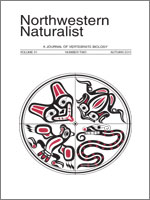We investigated population characteristics, microhabitat use, and activity patterns of Phrynosoma (Tapaja) douglasii (Pygmy Short-horned Lizard) within shrub-steppe habitat in Washington. Females were significantly larger (and more commonly encountered) than were males. Overall, lizards preferred lithosol microhabitat, which is characterized by rocky soils and sparse vegetation. Age, sex, and season, however, affected how lizards used lithosol, loamy, and ecotone microhabitats. Lizard age also affected daily, monthly, and seasonal activity. Adult activity peaked in June, yearling activity in April, and neonate activity in July. During spring and fall, adult activity peaked when daytime temperatures were highest, whereas in summer, the activity peak occurred in early morning and evening. In contrast, neonates remained active during temperature maximums in summer and throughout the day in fall. Although lizards preferred relatively open terrain, they were found closer to shrubs than expected, based on comparisons with random sites. Our results underscore the importance of seasonal variation and age in habitat use and activity patterns of P. (Tapaja) douglasii.
How to translate text using browser tools
1 September 2010
Ecology of the Pygmy Short-Horned Lizard [Phrynosoma (Tapaja) douglasii] in Washington
Megan E. Lahti,
Daniel D. Beck,
Tom R. Cottrell
ACCESS THE FULL ARTICLE

Northwestern Naturalist
Vol. 91 • No. 2
Autumn 2010
Vol. 91 • No. 2
Autumn 2010
central Washington
ecology
Microhabitat use
natural history
Phrynosoma (Tapaja) douglasii
Pygmy Short-horned Lizard




